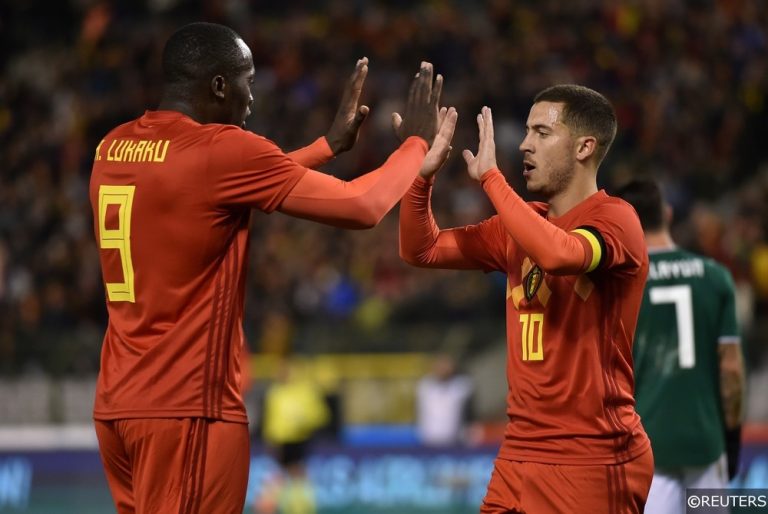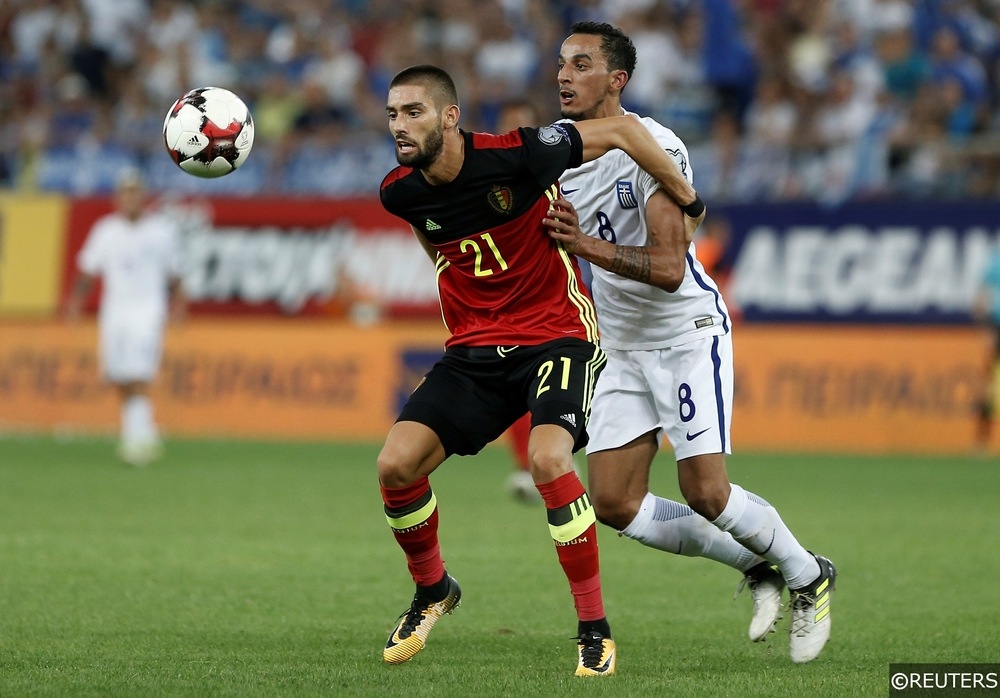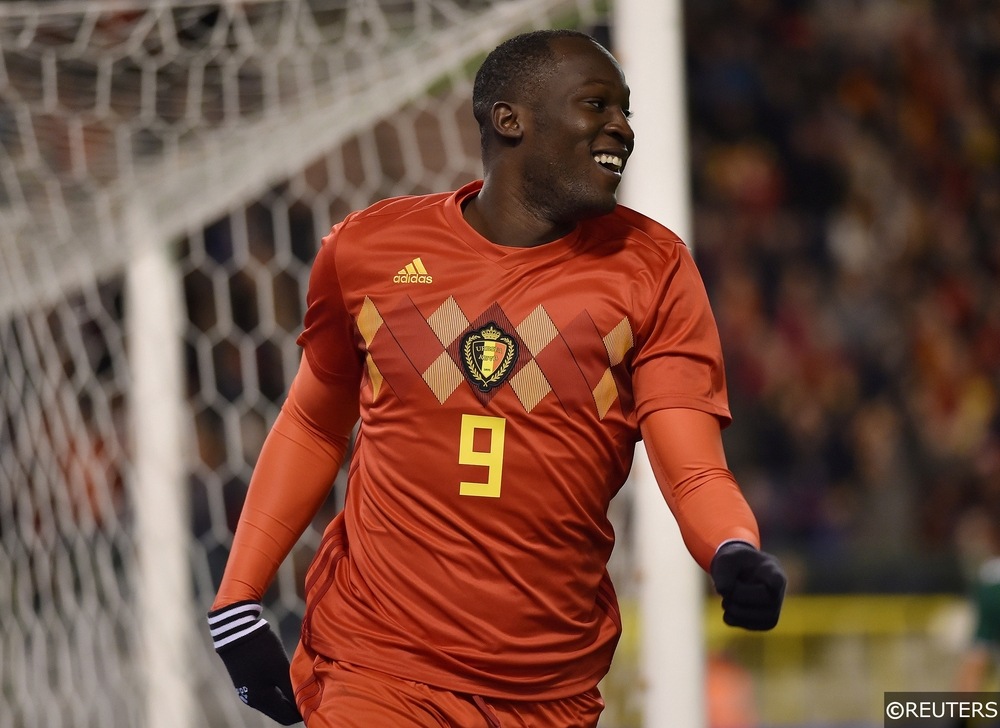
Before becoming a Sports Journalist for Free Super Tips, Aaron spent three years studying Sports Journalism at the University of Sunderland while taking in the Black Cats' 'glory years' under Martin O'Neill. Now back in Northern Ireland he turns niche stats into predictions for FST, while he's one of the few people on this island who is equally comfortable at Windsor Park and the Aviva.
Belgium head in to this summer’s World Cup with one of the strongest squads at the tournament. They’re third in the FIFA rankings after Germany and Brazil, and Roberto Martinez’s team will be under pressure to succeed.
The former Everton boss came in after Marc Wilmot’s Belgium crashed out of the quarter-finals at Euro 2016. That matched their finish in Brazil in 2014, with that World Cup return seen as solid progress. But how have the Red Devils moved on in four years?
Here, we’re looking at how they’ve improved since the last World Cup, with Martinez ringing the changes. They’ve switched from their 4-2-3-1 formation in Brazil to go with a 3-4-3 set-up, but there are more specific things which Martinez is doing to try and boost their hopes of World Cup glory.
Also see: Will Belgium’s Managerial Gamble pay off?
Key Player Pile-up
While many just want to see Belgium starting with all of their attacking talents, that obviously can’t work. Unless they’re prepared to go with the Spanish template of five fluid midfielders switching positions, then you need some organisation. Belgium started the 2014 World Cup with three attacking midfielders, and Kevin De Bruyne, Nacer Chadli and Eden Hazard were too similar to thrive.
The Red Devils kept their two key stars in their four competitive games at the tournament, and they had three different partners. Dries Mertens and Kevin Mirallas stepped in for Chadli, and that just repeated the same failings.
Starting with three players who are all very similar in a line just overloads Belgium, and not the opposition. Martinez has recognised that, and he’s moved De Bruyne in to a deeper midfield role, with Hazard and Mertens the choices on the wings. That structure gives all of them the space to thrive, and it’s likely to lead to goals for Romelu Lukaku.
This Also Played a Part in Nainggolan Being Dropped
Faith in Full-backs

One huge problem with Marc Wilmots line-ups in Brazil was their choice of full-backs. Tottenham duo Toby Alderweireld and Jan Vertonghen have become an impressive duo at centre-half in recent years, but Wilmots wasn’t much of a fan. He played the pair at right-back and left-back respectively. They flanked Vincent Kompany and Daniel Van Buyten, making that a very limited back four.
You’d be forgiven for mistaking this Belgium outfit for a Tony Pulis side with that kind of defence. With no support from full-back, the issues of having three narrow numbers 10s was made even worse. Belgium became predictable, and the attacking side saw two 1-0 wins, a 1-1 draw and a 1-0 defeat in their last four matches in Brazil.
This time around, Martinez is going with width in defence. He’s approaching this tournament with wing-backs, including PSG’s Anthony Meunier. On the left flank, Yannick Carrasco has been utilised as a wing-back. While it’s not a natural fit, it gives them more width. On top of that, three of the four centre-halves from 2014 remain in the side; this time playing in their preferred positions.
More Adventurous Midfield
Adding Carrasco out wide is a boost to Belgium’s midfield, which was far too conservative in 2014. Behind the trio of 10s, Wilmots went with a functional two as the anchors. Two of Mousa Dembele, Axel Witsel and Marouane Fellaini started each of their World Cup games. Now, those three fight for a single spot in the team.
The changes made to maximise the talents of Hazard and De Bruyne have removed the need for two holding players. Belgium now feature with one defensively minded anchor covering for De Bruyne in possession. With a three man defence, they have enough cover behind in order to get away with limiting their presence in the middle. The only issue is the problems they have pressing out of possession, as the Red Devils are often outnumbered in the middle of the park. However, this was already called out by De Bruyne, so Martinez has to be working on an answer.
Forward Vacuum

Would be a surprise to see Lukaku left out of any game at tournament this summer, but four years ago things weren’t as clear cut. The forward had just finished a loan spell at Everton, with 32 Premier League goals to his name at that point. However, he had just turned 21. The forward started the opening wins over Algeria and Russia, but he was rested in the final game against South Korea. However, he didn’t return to the starting line-up.
Kevin Mirallas took over in the last group game, and then Divock Origi led the line in both knockout games. He didn’t score in either, and he’s fallen out of favour with the national team. Now, Belgium have an obvious starter in Lukaku. He’s experienced enough to lead the line, which the likes of Michy Batshuayi and Christian Benteke will be alternatives from the bench. This time around, the number nine position is settled.
This is Behind Our Pick for the Golden Boot
Talents at their Peak
Lukaku isn’t the only Belgian player to benefit with experience. While a lot of Wolmots’ decisions are questionable, Martinez has a much stronger squad at his disposal. Four years ago, Belgium had the tournament’s youngest squad. This time around, they’ve got an average age a shade below 28. These players are in their prime, which is the biggest change of all.
Eight of Belgium’s side from the opener in Brazil are expected to start against Panama. The retired Van Buyen is out, while tactical changes have cost Mousa Dembele and Nacer Chadli their spots. While that first starting 11 had seven players below 26, they now have nine aged between 26 and 31. All of Belgium’s side are truly hitting their stride ahead of this tournament, and this is their time to prove themselves. This group of players really only have four years left at their peak, so the time is now for Martinez’s side.
They’ve all gained experience since Brazil. Now with a much better tactical set up, things have really changed for the better. The Red Devils still aren’t seen among the favourites, but they’re better equipped than ever.
Could Belgium’s 2018 side Beat England’s Golden Generation?
Follow Free Super Tips on Twitter to stay up to date with our daily tips and predictions or browse more football content on our website:


